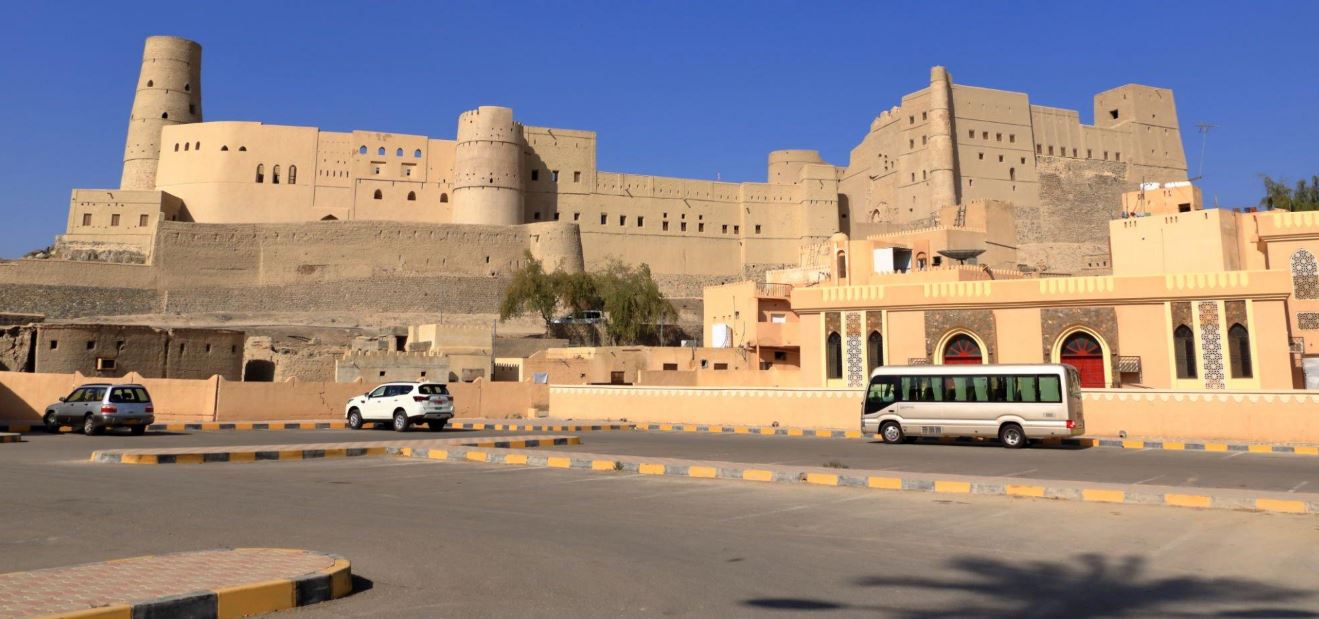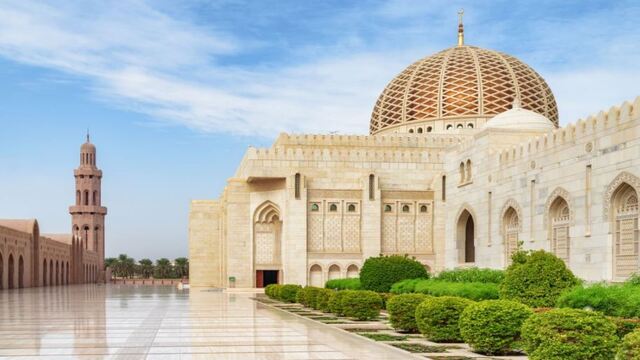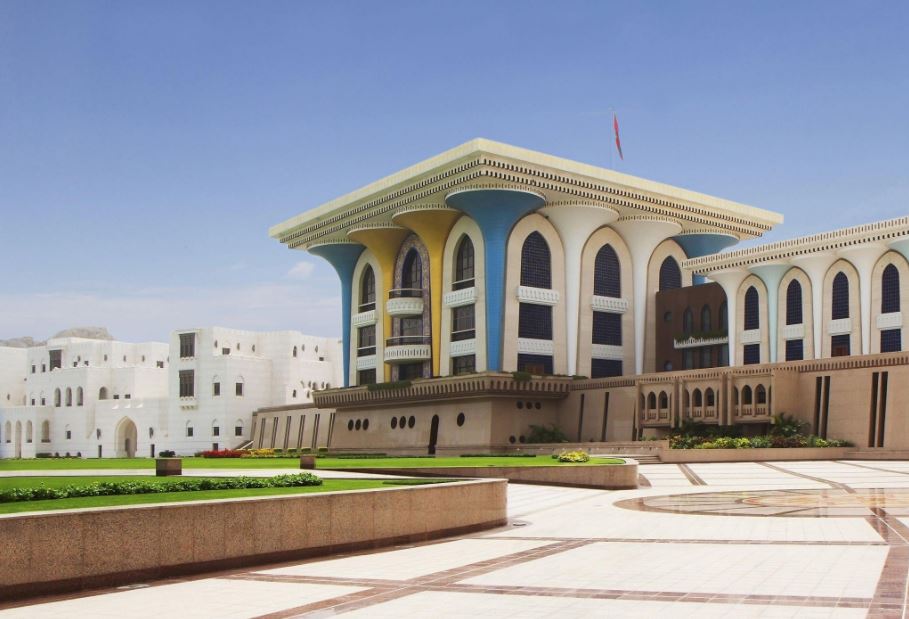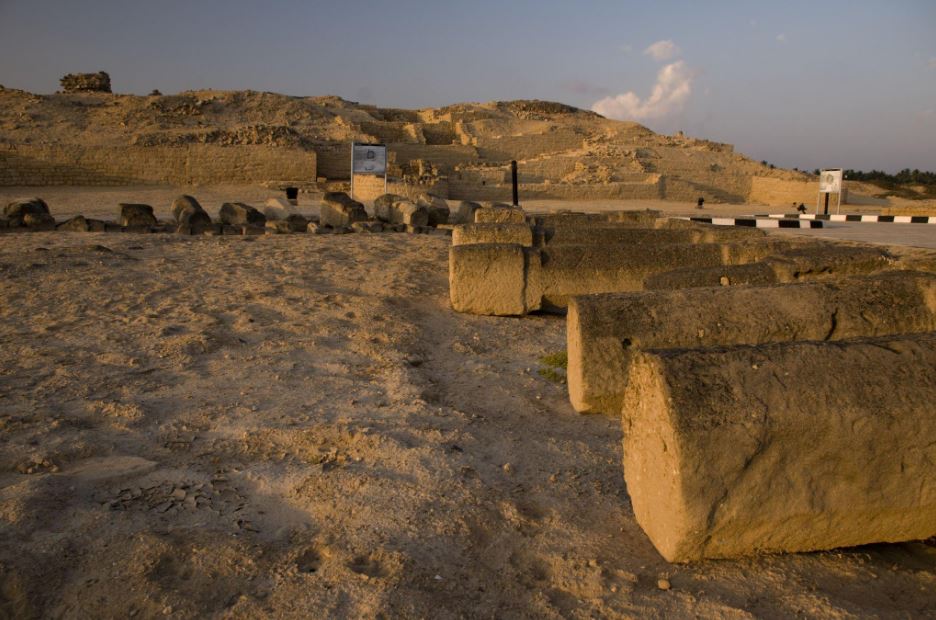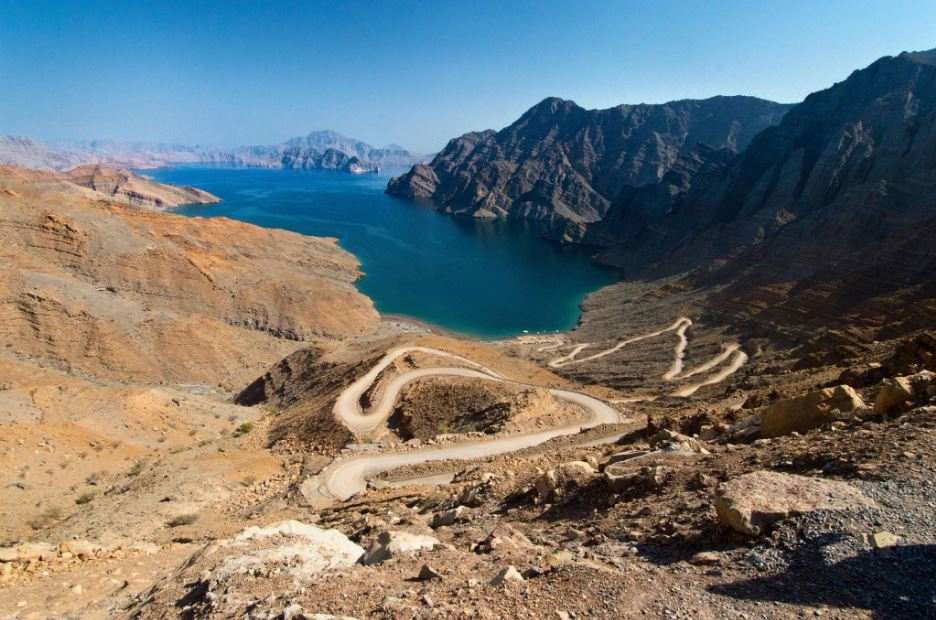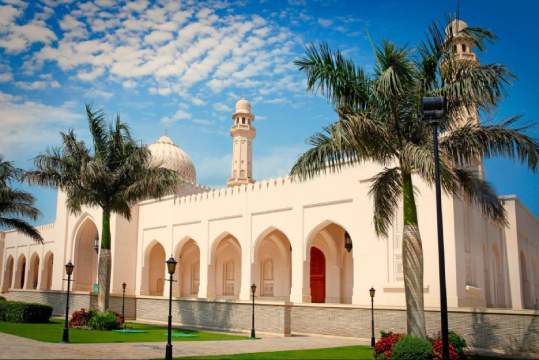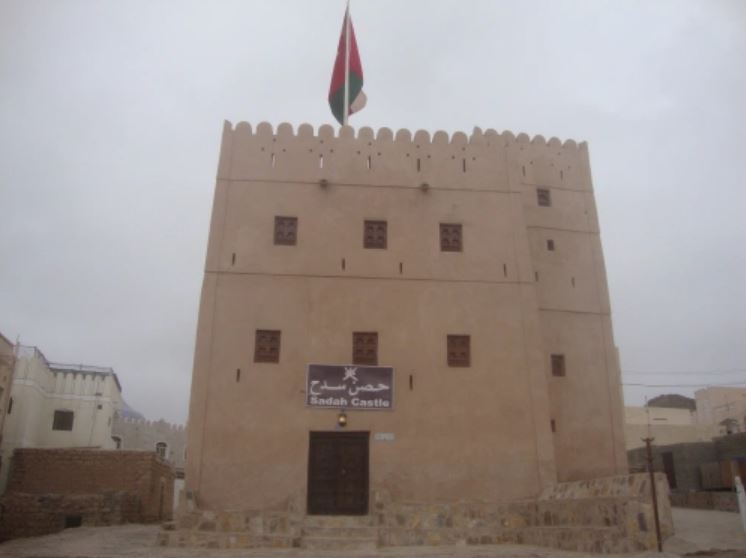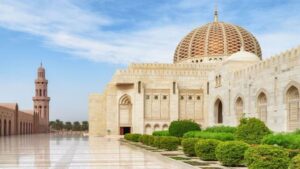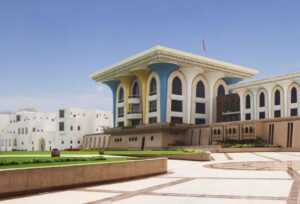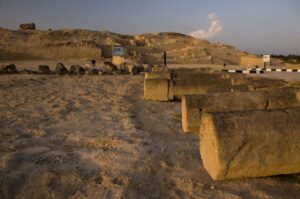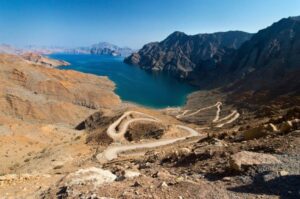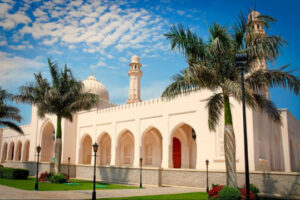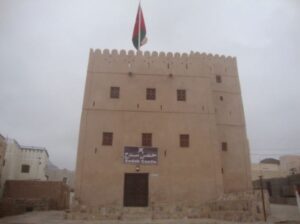Day 1
Arrive in Muscat proceed to the hotel and check in.
Grand Mosque: – Also named Sultan Qaboos Grand Mosque, it is Oman’s most prominent mosque, with 20,000 worshippers at a time. The mosque is a wonderment of contemporary architecture, and this worship center is beautifully crafted with Islamic, Omani, and Middle-eastern architectural designs
Note: – Timings: For non-Muslims, the mosque is open from Saturday to Thursday between 8 am to 11 am. Muslims can visit any time. Women should cover their head with the lady scarf, Must wear long sleeve Shirt/Top/T-Shirt and should cover their leg till the ankle. Men should wear full pants and half sleeve shirt or t-shirt also permitted. Both should not wear transparent clothing and no pictures of living beings.
Fish Market: – Located in the heart of Muttrah in Oman’s largest port, the new fish market is a tribute to Oman’s past and future. The town of Muttrah is known for its long trading history, unique port and long-standing fishing tradition. Located near the city’s original fish market, which was built in 1960, the new market represents the continuation of the region’s trading and fishing traditions, while also meeting Oman’s need to cater to its growing tourism industry.
Al Alam Palace :- This royal palace carries 200 yrs history and allows visitors to take photographs from outside. Also called The Sultan Qaboos Palace, the residence is one of the best representations of vibrant Islamic architecture. Now, the property is used to accommodate distinguished officials. Constructed by Imam Sultan Bin Ahmed, the palace is surrounded by The Mutrah harbor and lush greenery.
Drive to Wadi Dayqah Dam 26 Km, 55 Minutes.
Al Mirani Al Jalali Fort :- This 16th-century fort, along with the AI Jalali Fort, was erected by the Portuguese to guard the Muscat port. Visitors are not allowed to enter the palace, but they can enjoy the mesmerizing view from outside. The form played a significant role in the defeat of the Portuguese. The architectural wonder has various tools on display used in an ancient war.
Mutrah Souk :- Located in the heart of Muttra in Oman’s largest port, the new fish market is a tribute to Oman’s past and future. The town of Muttra is known for its long trading history, unique port and long-standing fishing tradition. Located near the city’s original fish market, which was built in 1960, the new market represents the continuation of the region’s trading and fishing traditions, while also meeting Oman’s need to cater to its growing tourism industry.
Bait Al Zubair :- Situated in Muscat City, this private museum houses historical items belonging to Oman’s cultural, military, and social past. Opened in 1998, this architectural complex has an extensive collection of artifacts like jewelry, weapon, household goods, Khanjars, and costumes Of Omani culture.
Opera House (Photo Stop) :- People who have a particular interest in art, music, and culture should keep it on their wishlist while traveling to Muscat. Set up in the year 2001, the magnificent complex has an auditorium, theatre, art center, and landscape garden. With a capacity of 1100 people, the art center is a true example of carrying the heritage with the arrangements of diversified cultural events.
Muttra Corniche (Photo stop) :- Mutrah stretches along an attractive corniche of latticed buildings and mosques; it looks spectacular at sunset when the light casts shadows across the serrated crescent of mountains, while pavements, lights and fountains invite an evening stroll or a bike ride.
Muttra Fort (Photo Stop) :- Muttrah stretches along an attractive corniche of half-timbered houses and mosques. At sunset, it looks spectacular as the light casts shadows on the mountain’s jagged crescent and the walkways, lights and fountains invite evening walks and bike rides.
Overnight in Muscat.
Day 2
After the breakfast proceed to Nizwa 170 Km. 2hrs.
You will visit Birkat al Mouz- Falaj Al Khatmayin -Nizwa Souq-Nizwa Fort and Tower-Jabreen Castle
Birkat Al Mouz:- In Oman’s Nizwa province, in the Ad Dakhiliyah district, is the historic hamlet of Birkat Al Mouz. It also houses the reconstructed fort known as Bait al Redidah and functions as the gateway to the Wadi Al-Muaydin on Jebel Akhdar’s southern edge. We highly suggest you make a pit break at the Birkat Al Mouz remains on your approach to Jebel Akhdar since the scenery from this village will transport you to a different era. You would also learn about the way that these native inhabitants resided in these mountains, which were bordered by plantations.
Falaj Al Khatmayin:- The Falaj Khatmayin is perhaps Oman’s biggest Falaj and a World Heritage Site in Nizwa, giving the city the water it needs for its farmlands and crops. Locals frequently visit the park created on a little fraction of the Falaj! This old Falaj is thought to date back to 2500 BC! Hence, while you’re on vacation in Nizwa, the Falaj is an excellent location to unwind and relax!
Drive to Nizwa 26 Km, 25 Minutes.
Nizwa Fort :- The erection of Nizwa fort, which was started in the seventeenth century by Sultan Bin Saif Al Yarubi, the utmost important member of the Yarubi tribe, and finished in twelve years, has a long and illustrious history. However, this Fort was constructed by Imam Al Sultan bin Malik Al Kharusi during the ninth century.
Nizwa Tower:- The foundation extends 30 meters (98 feet) underground. One of the most interesting features is the drum-like cylindrical tower about 45 meters (148 feet) in diameter and about 34 meters (112 feet) high. Two cannons guard the tower’s entrance, as well as a labyrinth of rooms, high-ceilinged halls, doorways, terraces, narrow staircases and corridors that give you a deeper look at the ingenuity of Omani architecture.
Nizwa Souq (Market):- which is close to the Nizwa fort, will offer you a taste of the past of Oman because most of its buildings still feature the country’s historical buildings. Based on what you wish to purchase, the souq is divided into separate sections; You can witness locals purchasing Omani Pottery, Silver jewelry, Handicrafts, Spices, Frankincense, Traditional Omani attire for both men and women, Traditional Khanjars (Dagger), Perfumes, Dates and Dates Honey, Meat, fruits and vegetables, Omani Traditional Sweet Halwa. The remaining of its souq offers distinctive mementos like fresh dates, lamps, and taqiya headgear. The typical Omani souq marketplace is the most incredible location to observe how the community market functions.
Drive to Jabreen Castle 42 Km, 30 Minutes
Jabreen Castle:- Jabreen Castle rises majestically from the neighboring plain without opposition. Even though there is an abundance of defenses, Jabreen is among the most charming and well-preserved fortresses out there. Hence it’s worth the struggle to scale another series of battlements. You’ve to head towards the flagpole for a bird’s-eye glimpse of the courtyard with honeycomb windows at the keep’s center. The spaces here have unique colored ceilings. In contrast to other castles and forts in Oman, Jabreen Castle was constructed in 1675 by Imam Bil-Arab Bin Sultan and served as a significant hub of education for Islamic law, medicine, and astronomy. Within the extensive battlements, there’s a great deal to understand about the castle’s history.
Overnight in Nizwa.
Day 3
You will visitBahla Fort-Bahla Pottery Factory-Al Humra-Misfat Al Abraeen-Muscat
Bahla Fort:- Bahla Fort, among the biggest in Oman, now towers over the expansive contemporary community of Bahla following years of repair. It was constructed by the Bani Nabhan clan, which ruled the region from the twelfth to the fifteenth century, and was designated a Unesco World Heritage Site in 1987. Although this massive fort has a couple of interpretive panels, its expansive vista from the castle walls and size are its main draws. A beautiful illustration of a medieval Islamic society built over the Falaj is the neighborhood’s mud-brick homes (irrigation channels). The winding roads here are best explored on foot.
Al Humra:- Al Hamra is a 400-year-old town in the Ad Dahiriya region of northeastern Oman. [1] As a province (Wilayat), it is home to a number of villages, including the village of Ghul to the northwest of the city, and the village of Misfat Al Abryeen on a hilltop with Bimah to the north-northeast. The city and province lie on the southern slopes of the Akhdar Mountains.
Misfat Al Abriyeen :- Today there is no hurry for you. You can complete every famous and attractive destination of Misfat al Abriyeen. Today you will explore the natural and authentic beauty of the village. Have breakfast and roam around the village to feel how locals live their regular lives. Preserve the place in your heart forever. First, you will explore the Aflaj or Grassy Gardens and then stroll around the mountainous village.
Drive back to Muscat
Overnight in Muscat
Day 4
Departure from Muscat to Khasab.
Arrive in Khasab proceed to the hotel and check in.
Day for relax
Overnight in Khasab
Day 5
After the breakfast,
Activity of the day Dolphins watching, Snorkeling and swimming.
Dolphins Watching:- Many boat service companies can give you a dolphin shows experience. If you like seas, you will definitely like this. It will give you the excitement of dolphins and the experience. The most popular place for dolphin shows is the Musandam Sea.
Snorkeling and swimming:- Experts say this is the most exciting activity on the Peninsula of Musandam. Snorkeling is not something you can do anywhere, and you are not allowed to do such things even if you want to. You can be in the heart of the ocean and see some of the beautiful creatures of nature inside the water, such as Starfish, reef sharks, tiger fish, and other marine life creatures.
Overnight in Khasab.
Day 6
After the breakfast
You will embark onthe Dhow Cruise and visitKhasab Castle.
Dhow Cruise:- A full-day dhow cruise on Khasab Musandam is a great opportunity to spot dolphins, snorkel and enjoy the beautiful scenery of the Musandam fjords. A full-day dhow cruise in Khasab takes you to historic Telegraph and Seebi islands for the best swimming and snorkeling moments in the Musandam fjords. Khasab Dhow Cruise`s full-day cruise includes a delicious traditional Omani lunch and unlimited drinks snacks.
Khasab Castle:- The Khasab Castle is situated in the Musandam Peninsula’s provincial capital Khasab. When the Portuguese conquered the Khasab Province in the seventeenth century, they constructed it as a component of their strategy to seize the power of the Strait of Hormuz, a confined passage from the Arab Peninsula to the Arabian Gulf. The Omanis used it in 1624 while they fought the Portuguese out of the nation. Later, it served as both a prison and the residence for the Wali, the administrator of Khasab.
Overnight in Khasab.
Day 7
After the breakfast.
You will visit Harim Mountain tour
Harim Mountain:- Jabel al Harim is also known as the mountain of women. Jabel al Harim is the highest peak of the Musandam, about 2080 meters above sea level. The Jabel al Harim has got some beautiful vistas and spectacular inspiring landscapes. This place mainly attracts tourists with the new soft green grass around the spring. You can also view the beautiful scenery of the Strait of Hormuz.
Overnight in Khasab.
Day 8
Departure from Khasab to Muscat
Arrive in Muscat proceed to the hotel and check in.
Overnight in Muscat
Day 9
Departure from Muscat to salalah
Arrive in Salalah proceed to the hotel and check in.
Day for relax
Overnight in Salalah
Day 10
After the breakfast,
You will see Khur Ruri(Samhuram)-Taqah Castle-Taqah Beach Photo Stop-Al Baleed Museum and Archiological site.
Khur Ruri(Samhuram):- Sumhuram archaeological park is one of the beautiful bays of Dhofar, and it was previously one of the leading trading ports of frankincense and known as Khor Rori. This heritage site is spread over 25 miles of East Salalah on a hilltop that overlooks the freshwater stream of the Khor Rori. It is a fascinating park that serves as a museum and archaeological park
Taqah Castle:- Taqah Castle is one of the most visited and famous castles in Oman. This gen is comparatively built new than other castles. This beautiful castle is located in Taqah’s fishing village, surrounded by white sand beaches. This castle is well maintained and preserved and known as one of the famous forts of Oman.
Taqah Beach:- Enjoy the beautiful beach of Taqah.
Al Baleed Museum and Archiological site:- A jewel landscape in Salalah is included in UNESCO’s list, and a prominent place for history lover visitors. It is an open archaeological site on the Arabian Sea coast and lies close to Haffa Souq and Al Husn Palace.
Overnight at Salalah.
Day 11
After the breakfast
You will visit Sultan Qaboos Mosque-Wadi Darbat-Tawi Attair Sink Hole-Gravity Hills-Mirbat-Sadah Beach and Castle
Qaboos Mosque:- One of the largest mosques in the Dhofar region is situated in Salalah. This mosque is in the city’s center, an original and authentic display of Islamic architecture decorated with marvelous chandeliers, wall patterns, and green carpets. This place is a huge attraction and Stays crowded all over the year. So visitors during Khareef season or any other part of the year can visit this mosque.
Wadi Darbat:- A must-see on any vacation to Salalah is Wadi Darbat, which is lush all year round. A stream with tree-lined sides and, frequently, camels grazing on them may be found at the wadi’s highest echelons. However, viewing the travertine curtain first from the bottom will provide a great view. You can also see the cascade and the other pools below it. From the parking lot, a small trail leads into the forest. Follow this and climb just a few rocky outcroppings until you can see the waterfall clearly and in all its splendor.
Tawi Attair Sink Hole:- One of the world’s most giant sinkholes, spanning 150meters wide and 211m deep, is located near Wadi Darbat. Although many tourists stop here, most just stroll towards the edge’s viewing deck, take a quick look around, and then get back in a Landcruiser. Avoid making this error! You won’t be impressed at all because the sight from the summit is pretty constrained.
Gravity Hills:- At Salalah Anti Gravity Point, watching the automobile move up the slope in neutral without no acceleration is an incredible sight. This is something special. The car may go between 40 and 60 kilometers per hour without accelerating.
Mirbat:- Mirbat Castle, the most famous and crucial twins of Salalah.Being the capital of this region years back, it is full of history. Mirbat Castle carries a history of exporting and breeding horses. This town gained fame because of the legendary battle fought on 19th July 1972. Mirbat Castle played an important administrative and defensive role between the Yemeni communist supporters and British troops. This castle got renovated and restored in 1991 and opened to the public. It was declared a tourist site in 1996. It showcases the traditional intensity of Dhofar and several other Sultanate governorates.
Sadah Beach and Castle:- A crucial trade center where frankincense was traded for hundred years. During the time of Sayyid Taimur bin Faisal, this Sadah Castle was one of the crucial pillars which guarded the Dhofar governorate. As it lies in the far east of the region, this castle plays the role of a watchman. At first glance, this night disappoints you because it might appear worn out and old buildi6, but believe me, it is full of surprises. This surprising building is featured embroidered textiles, cultural antiques, and colorful interiors, which gives a homey feeling. Visitors can explore the three rooms of a castle, including the kitchen, which contains imported porcelain, antique pictures, and pottery.
Overnight in Salalah.
Day 12
After the breakfast
You will see Mughsail Beach-Ayn Khor Fall-Dhalkut Village.
Mughsail Beach:- Mughsail Blowholes at Marneef Cave is one of the most crowded places in Salalah. A combination of natural and stunning fountains and beaches is just mesmerizing. It is a year-round destination. During the kareef season, the natural fountains reach more height than in other seasons. Visitors can experience bird watching, barbeque making, and horse riding at the beach, which are favorite activities. It is the ultimate picnic spot that can be visited in all seasons.
Ayn Khor Fall:- We didn’t see the Ayn Khor falls running, but if you reach Salalah either during or shortly after the khareef, you might see it. You’ll find a lovely blue pool at the base, and thick vegetation cascades over the rocky outcrop from either side of the falls.
Dhalkut Village:- The little village of Dalkut, located approximately 130 miles from Salalah and close to a Yemeni border, is reachable after Fazayah. Visitors can visit coastal communities like Rakhyut along the way, practice driving on winding roads with steep switchbacks, and see out undiscovered beaches close to Sha’at. There’s a military checkpoint on the road, so make sure you have insurance and passport information.

